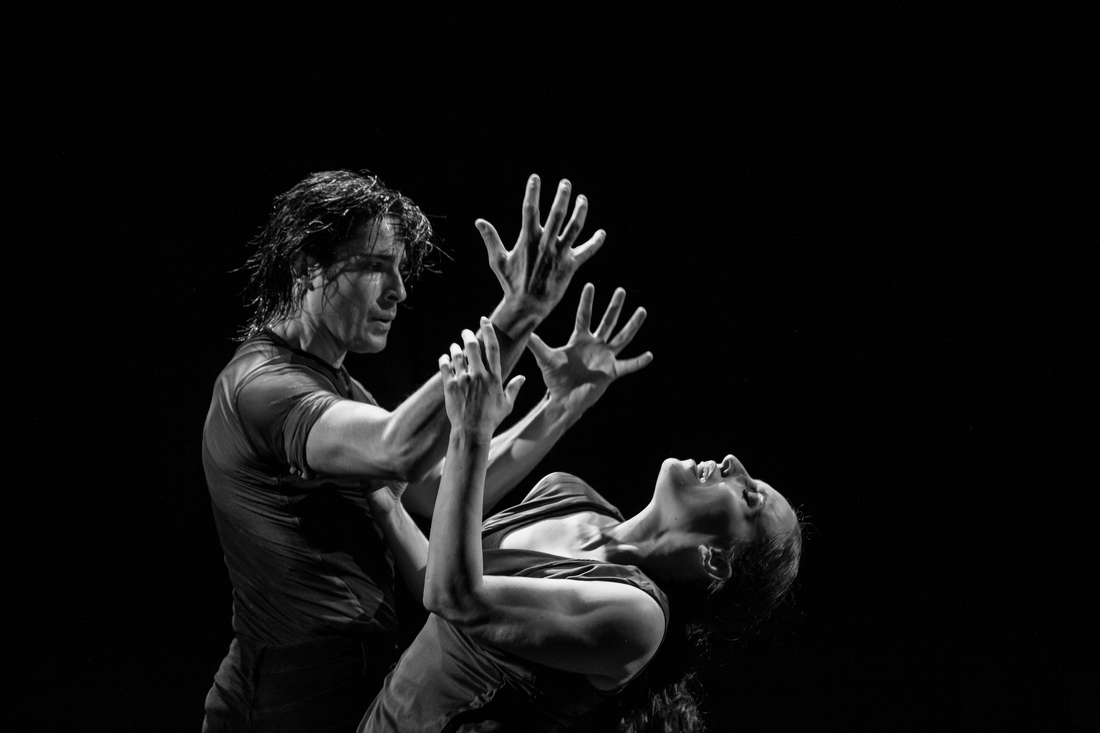|
Noche Flamenco performed "Searching for Goya" on Saturday at Williams College. (Photo by Jesse Rodkin) In a world of dissent, anxiety and turmoil, Soledad Barrio and Noche Flamenco’s “Searching for Goya” is timely.
Yes, the evening-length piece is based on Francisco’s Goya’s more than 200-year-old print series “Disaster of War.” But the work with the amazing talented ensemble of flamenco artists, as assembled by director and choreographer Martin Santangelo, couldn’t be more contemporary; and more haunting. “Searching for Goya,” as seen in a preview version on Saturday night at Williams College, is an eight-part creation. And while each depiction is not equal in power to touch an audience, the majority did with its raw images of war’s ravages – mainly death and poverty. The evening began with the engaging voice of singer Manuel Gago who called everyone to attention. Alone on a darkened stage, his voice cut through distractions. He was the commander who made way for all that followed – the rage and tenderness of a trio of flamenco dancers, including the bold Barrio, who were complemented by a scintillating ensemble of guitars, singers and a percussionist David “Chupete” Rodriguez who fingered the castanets like no other. The goal of the work was to recreate what Goya saw, and subsequently drew, during the conflicts between Spain and Napoleon’s France. The prints are considered his protest against the violence. An anti-war message was not obvious in “Searching for Goya,” but what was is this sense of stolen unity and harmony. In the early scenes, one at the town plaza in which the people sing together followed up by a flirtatious solo featuring Marina Elana with fan and parasol, offered up a vision of community that was sweet and pleasing. Then comes Carmina Cortes who sings Bulerias. To the non-Spanish speaking person, like myself, Cortes’ big voice was scolding and warning. The soothsayer in green gown, she pointed a finger at the audience, the society complicit in the mess. A searing solo with dancer Pablo Fraile, accompanied by guitarist Eugenio Iglesias, followed. It expressed the stalwart action that machismo requires. Fraile was a rod, strong, gritty and resolute. The one of the most memorable moments came from Rodriguez who fingers stormed over the castanets as a barefooted and shrouded woman slowly moved across the stage in the most direct recreation of a Goya print, “The Beds of Death.” Even more potent was Barrio in her final face-off with death in “Asomandose.” In the dance, accompanied by the musical ensemble, Barrio, dressed in black, drew the audience in with her full-body soliloquy. Her rapid-fired footwork as she flung her body forward and back, up and down, portrayed a fear and anger at all that took place. She left the audience breathless and stunned by her honesty and intensity. Bravo Soledad Barrio and Noche Flamenco.
2 Comments
|
Wendy
|

 RSS Feed
RSS Feed
